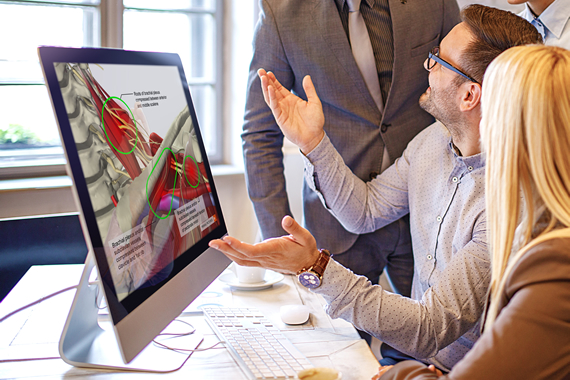Health practitioners engage, educate patients with software for human anatomy
Everyone absorbs information differently; some people grasp more by hearing, some by seeing (both reading and visuals), and others by doing. When healthcare practitioners need to explain complicated diagnoses and treatment plans to patients, it is important that they present the information in both a manner and format that are easily understandable. This is particularly true when breaking bad news; the patient will likely be in a distressed state of mind and need help with focusing on the options being presented.
They say a picture is worth a thousand words. When it comes to educating patients, 3D human anatomy images and 360-degree animations are worth multiples of thousands of words (most of which are “medicalese” gibberish to patients). Interactive visuals promote clear communication, resulting in improved patient engagement, trust, compliance and, ultimately, outcomes.

Chiropractor Ian Reed says, “It’s easy to forget that our training has given us a very detailed knowledge of how the body operates.” He uses Primal Pictures’ 3D human anatomy software to “bring the body to life” for patients.
“It’s a bit like leading the patient by the hand,” he says, adding that the images clarify patients’ understanding. A patient can relate the images to a point on their own body and can therefore make more sense of what is happening to them.
